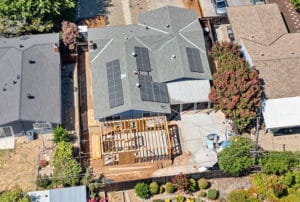





A link to download your FREE brochure will be in your inbox in 3 minutes



















The final price may vary based on project specifics.
To get a free accurate quote tailored to your needs, book a consultation with us today!

The price per square foot provided is an average and may vary depending on project-specific details such as materials, location, complexity, and other factors. Actual costs may differ from the average provided.
It is recommended to obtain a detailed quote based on the specific requirements of your project.

Please note that the monthly payment displayed on this page is an estimate and is subject to variation based on the selected loan product, applicants credit score, loan amount, and other financial details. Actual monthly payment may differ from the estimate provided.
It is recommended to seek advice from a financial advisor or loan officer to obtain precise payment information tailored to individual circumstances.
 Your Trusted
Local Contractor
Your Trusted
Local Contractor
 When it comes to buying land for a tiny house, there are a variety of factors to consider, from zoning laws to utility access. Finding the right plot of land and navigating the local regulations can be challenging, but with proper research and planning, it’s possible to secure the perfect location for your tiny home. Here’s what you need to know.
When it comes to buying land for a tiny house, there are a variety of factors to consider, from zoning laws to utility access. Finding the right plot of land and navigating the local regulations can be challenging, but with proper research and planning, it’s possible to secure the perfect location for your tiny home. Here’s what you need to know.
One of the most crucial steps in buying land for a tiny house is researching the zoning regulations and building codes in your area. These laws vary widely between regions and determine whether or not you can legally place a tiny home on a specific piece of land. Some areas have minimum size requirements for homes, while others might restrict the types of dwellings allowed on residential lots.
Before you make a purchase, it’s essential to contact the city or county government to confirm the zoning ordinances and local building codes that apply to the land you’re interested in.
The type of land you choose for your tiny house depends on your preferences and lifestyle. You may want a rural retreat with fewer restrictions or a suburban plot closer to the city. Here are a few tips for finding the right land:
Online platforms such as Zillow, LandWatch, and local real estate listings can help you identify available plots. Working with a real estate agent experienced in tiny home projects can also streamline the process.
Once you’ve found the right plot, you’ll need to ensure that the land meets your legal and financial requirements.
If you’re buying rural land without public utilities, you’ll need to plan how to power and sustain your tiny house. Some tiny homeowners choose to go off-grid, using solar power, rainwater collection systems, and composting toilets to support their tiny house living.

By doing your due diligence—understanding the legal requirements, researching zoning laws, and considering utilities—you’ll be well-
prepared to find
and buy land for your tiny house. Whether you choose a rural plot with complete independence or a tiny house community with shared resources, owning the right piece of land will set the foundation for your tiny house living dream.
Zoning laws and building codes determine where you can legally place a tiny house and what standards it must meet. They vary by region and may have minimum size requirements or restrictions on dwelling types. Before purchasing land, contact local city or county authorities to confirm applicable zoning ordinances and building codes.
Consider whether you prefer urban, suburban, or rural land. Urban and suburban areas may have stricter building restrictions and higher costs but offer proximity to amenities. Rural land often provides more flexibility with zoning laws and larger plots but may require you to install utilities like septic systems and water supply.
Ensure the land complies with zoning regulations for tiny homes. Obtain necessary permits for building, utilities, plumbing, and septic systems. Factor in all costs, including the purchase price and expenses for developing utilities if they are not already available on the property.
If the land doesn’t have access to public utilities, you can opt for off-grid solutions. Install solar panels for electricity, use rainwater collection systems or wells for water, and consider composting toilets or septic systems for sewage. Propane can be used for heating and cooking. Planning for these systems is essential when buying such land.
Get a First Look at Real ADU Projects